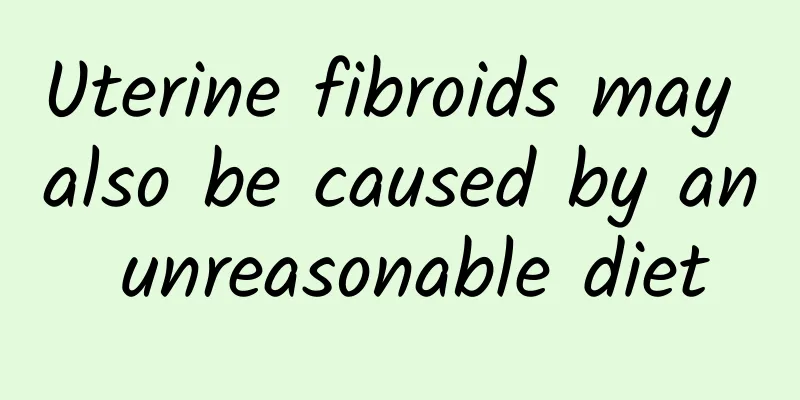What is the difference between uterine fibroids and adenomyosis?

|
What is the difference between uterine fibroids and adenomyosis? 1. Reflection The prominent manifestations of uterine fibroids are heavy menstruation and irregular bleeding. The size of fibroids varies greatly, with large ones weighing tens of kilograms and small ones even showing dozens or hundreds of fibroids growing together. The prominent manifestation of adenomyosis is secondary dysmenorrhea. With the increase of age, the pain will become more and more severe, and even affect normal life and work; the uterus also enlarges, but rarely exceeds the size of a 3-month pregnant uterus. 2. Assist viewing Uterine fibroids and adenomyomas are similar in age of onset, manifestations and signs, making them difficult to distinguish. They often require auxiliary examinations for diagnosis, most commonly ultrasound examinations. In addition, vaginal ultrasound, Doppler ultrasound and other examinations can also be used to improve the accuracy of the distinction between the two. The ultrasound manifestations of the two are: In uterine fibroids, the uterus is enlarged and deformed. The tumor is spherical and mostly hypoechoic. There is a boundary between the tumor and the muscle wall, and there are circular or semi-circular blood flow signals around the tumor. In adenomyosis, the uterus enlarges, the myometrium thickens, and the posterior wall becomes more prominent, causing the endometrial line to shift forward. The lesion site is often isoechoic or slightly more echoic, and sometimes punctate low echoes can be seen. There is no obvious boundary between the lesion and the surrounding area. How to maintain the uterus? 1. Maintain an optimistic attitude Being in a good mood is very important. No one can move forward in an unstoppable manner. Pressure and setbacks exist everywhere, so we must adjust our mentality and face life with an optimistic attitude. 2. Adjust your diet Women should eat more foods containing protein and vitamins. If the menstrual flow is heavy, they should eat more foods rich in iron to prevent iron deficiency anemia. 3. Actively treat endocrine disorders Endocrine disorders caused by various reasons should be treated actively, as they will increase the risk of induction and development of adenomyosis. Unnecessary use of sex hormone drugs should be avoided. When treatment is necessary, medication should be taken as prescribed by the doctor. |
<<: Does adenomyosis cause back pain?
>>: What are the common symptoms of uterine fibroids?
Recommend
What medicine should I take for candidal vaginitis?
Common oral medications for candidal vaginitis in...
Is right ovarian rupture an ectopic pregnancy? Will there be bleeding?
Ruptured right ovarian pregnancy is a special typ...
What kind of body type is better for surgery for uterine fibroids? What kind of surgery is better for uterine fibroids?
Uterine fibroids are a common gynecological disea...
Several major causes of uterine fibroids
Uterine fibroids are a major disease that many wo...
What medicine should women take for irregular menstruation? Chinese medicine classification and treatment methods for irregular menstruation
Irregular menstruation is a common condition and ...
Are there any dangers of cervical erosion in women? Women should be aware of these dangers of cervical erosion
Cervical erosion is a common disease in daily lif...
What medicine is better for uterine fibroids? How to use medicine for uterine fibroids
Recently, the number of patients with uterine fib...
What is the effective way to treat vulvar leukoplakia?
Many women ask, how can I cure vulvar leukoplakia...
Understand the hazards of cervical erosion in women
In today's society, many women suffer from ce...
Eliminate clenbuterol! Council of Agriculture requires pig farmers to sign a written pledge
The issue of ractopamine continues to heat up. On...
miserable! Diarrhea caused by eating bread turns out to be gluten allergy
Eating bread and noodles causes diarrhea and itch...
What are the early symptoms of vaginal candidal infection?
There are many types of vaginitis, and each type ...
Common treatment methods for uterine fibroids Conservative treatment methods for uterine fibroids
Uterine fibroids are a gynecological disease that...
If a girl eats too much oil, her blood plasma will turn milky white! Nutritionist: 6 dietary tips to avoid "chylosing blood"
If you eat too much oil in your diet, your blood ...
Patients with pelvic inflammatory disease of qi stagnation and blood stasis type can eat more peach kernels
Traditional Chinese medicine pays attention to th...









